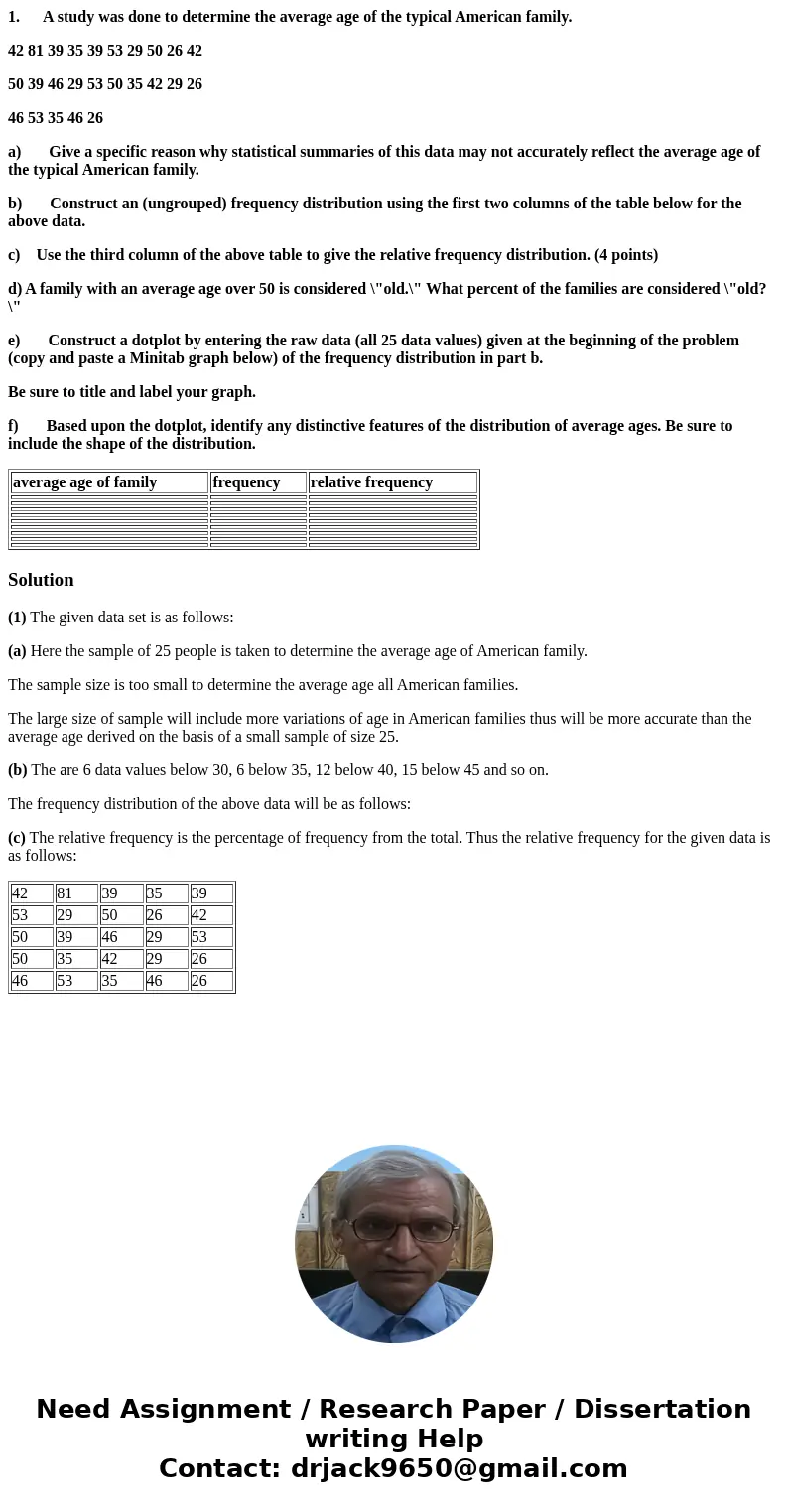1 A study was done to determine the average age of the typic
1. A study was done to determine the average age of the typical American family.
42 81 39 35 39 53 29 50 26 42
50 39 46 29 53 50 35 42 29 26
46 53 35 46 26
a) Give a specific reason why statistical summaries of this data may not accurately reflect the average age of the typical American family.
b) Construct an (ungrouped) frequency distribution using the first two columns of the table below for the above data.
c) Use the third column of the above table to give the relative frequency distribution. (4 points)
d) A family with an average age over 50 is considered \"old.\" What percent of the families are considered \"old?\"
e) Construct a dotplot by entering the raw data (all 25 data values) given at the beginning of the problem (copy and paste a Minitab graph below) of the frequency distribution in part b.
Be sure to title and label your graph.
f) Based upon the dotplot, identify any distinctive features of the distribution of average ages. Be sure to include the shape of the distribution.
| average age of family | frequency | relative frequency |
Solution
(1) The given data set is as follows:
(a) Here the sample of 25 people is taken to determine the average age of American family.
The sample size is too small to determine the average age all American families.
The large size of sample will include more variations of age in American families thus will be more accurate than the average age derived on the basis of a small sample of size 25.
(b) The are 6 data values below 30, 6 below 35, 12 below 40, 15 below 45 and so on.
The frequency distribution of the above data will be as follows:
(c) The relative frequency is the percentage of frequency from the total. Thus the relative frequency for the given data is as follows:
| 42 | 81 | 39 | 35 | 39 |
| 53 | 29 | 50 | 26 | 42 |
| 50 | 39 | 46 | 29 | 53 |
| 50 | 35 | 42 | 29 | 26 |
| 46 | 53 | 35 | 46 | 26 |

 Homework Sourse
Homework Sourse